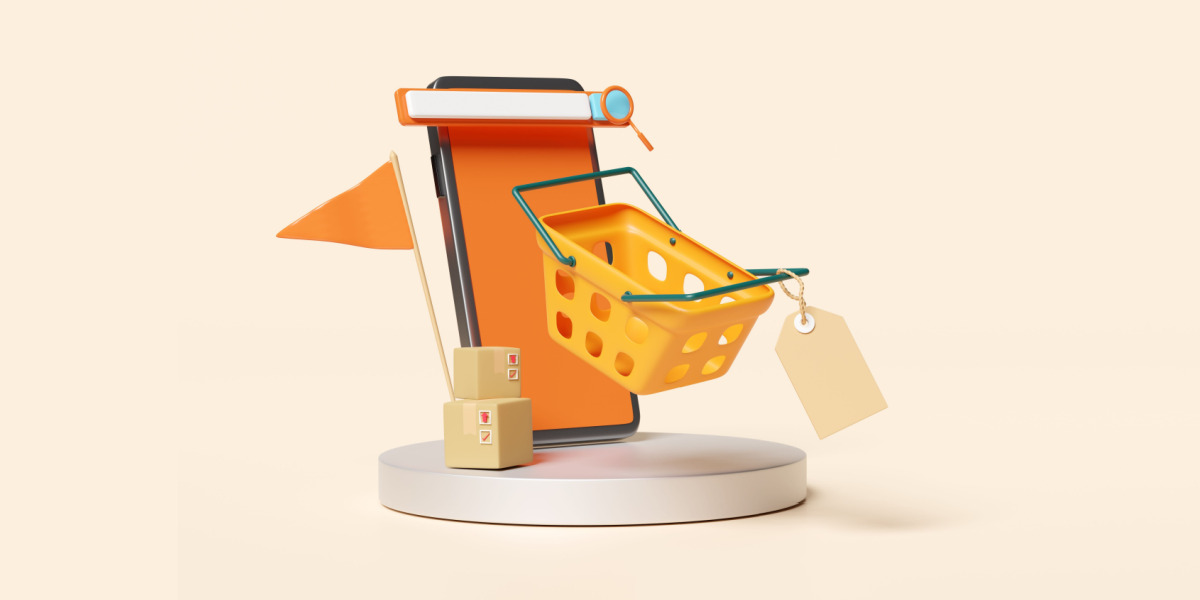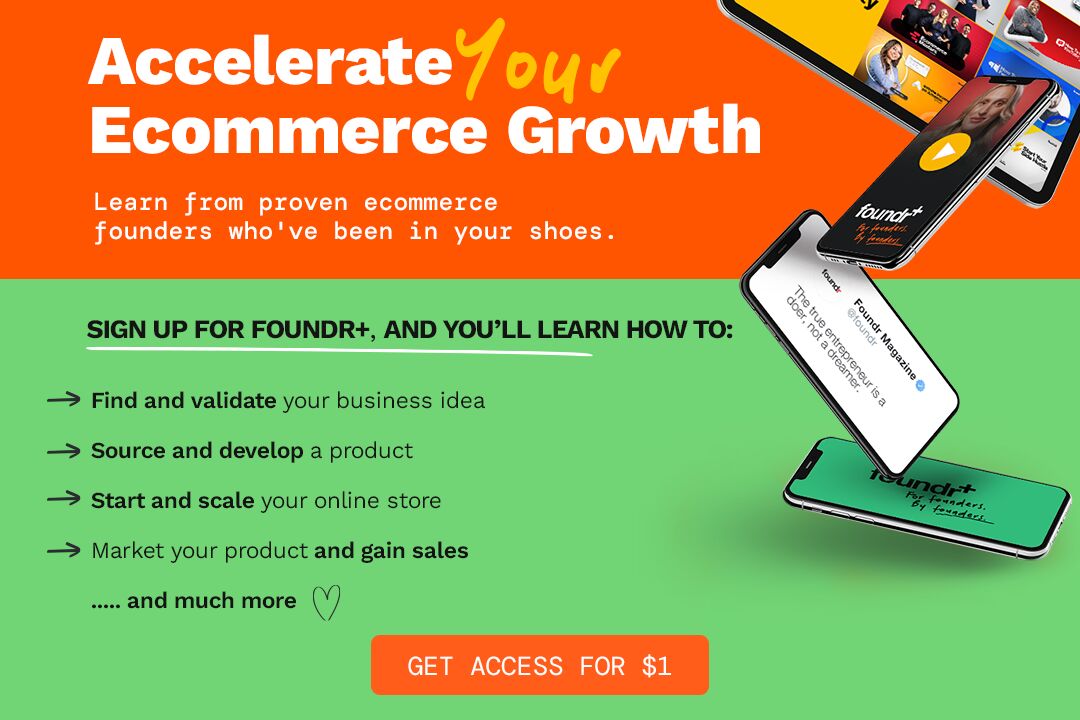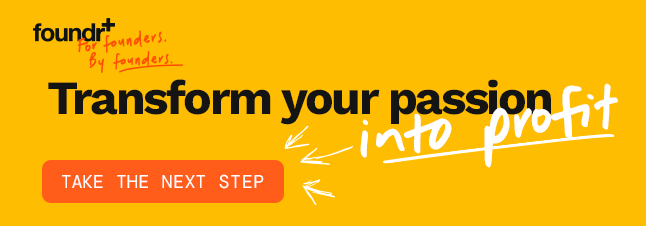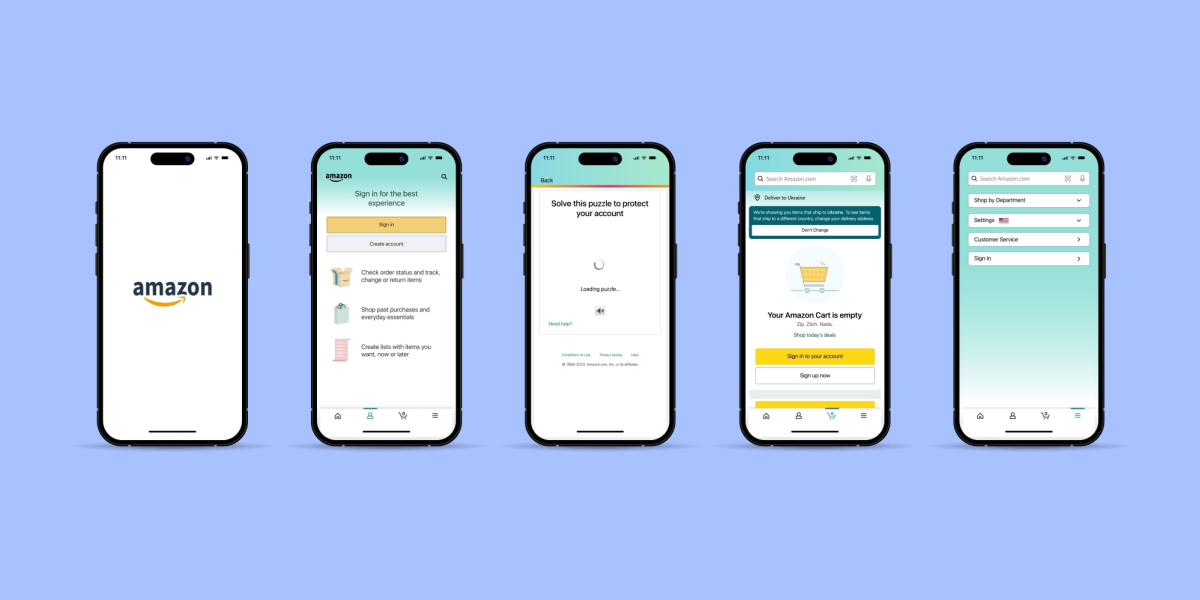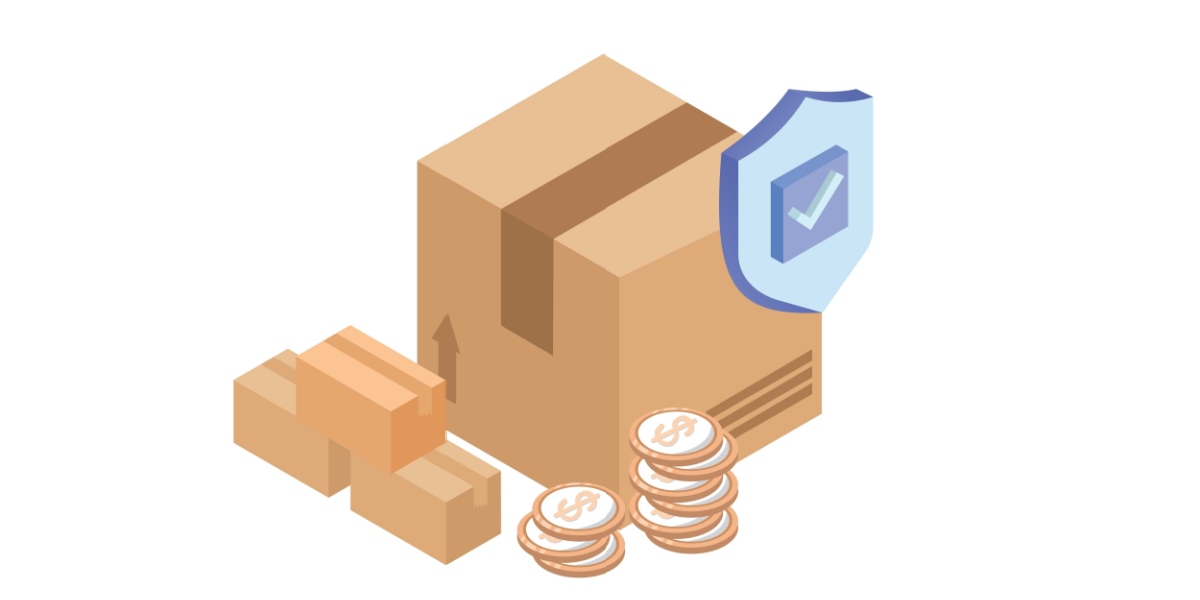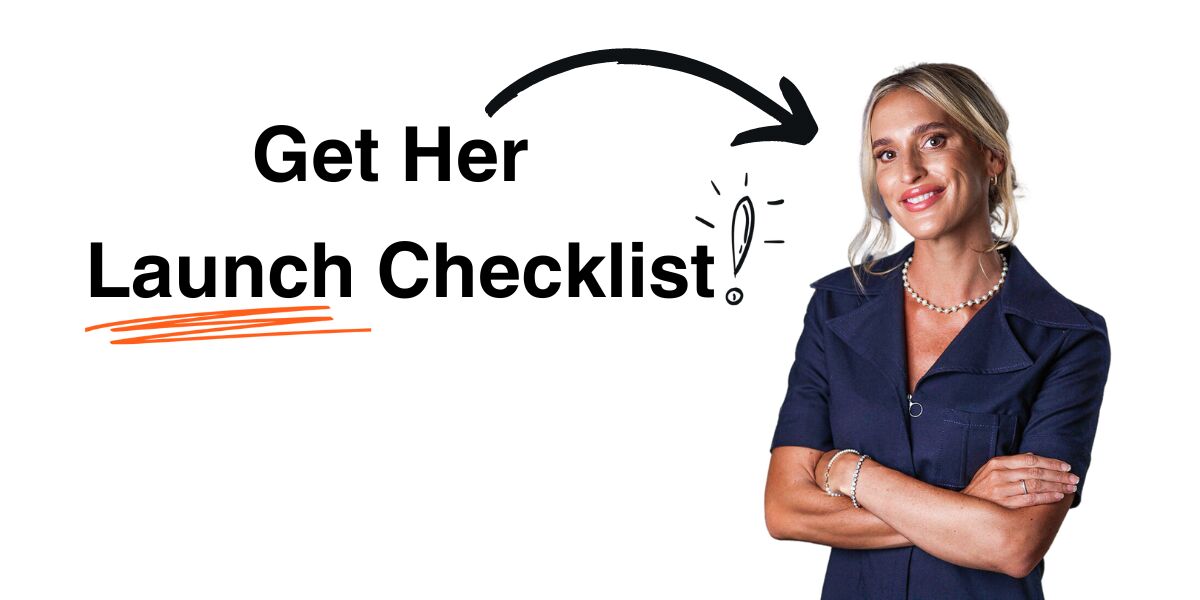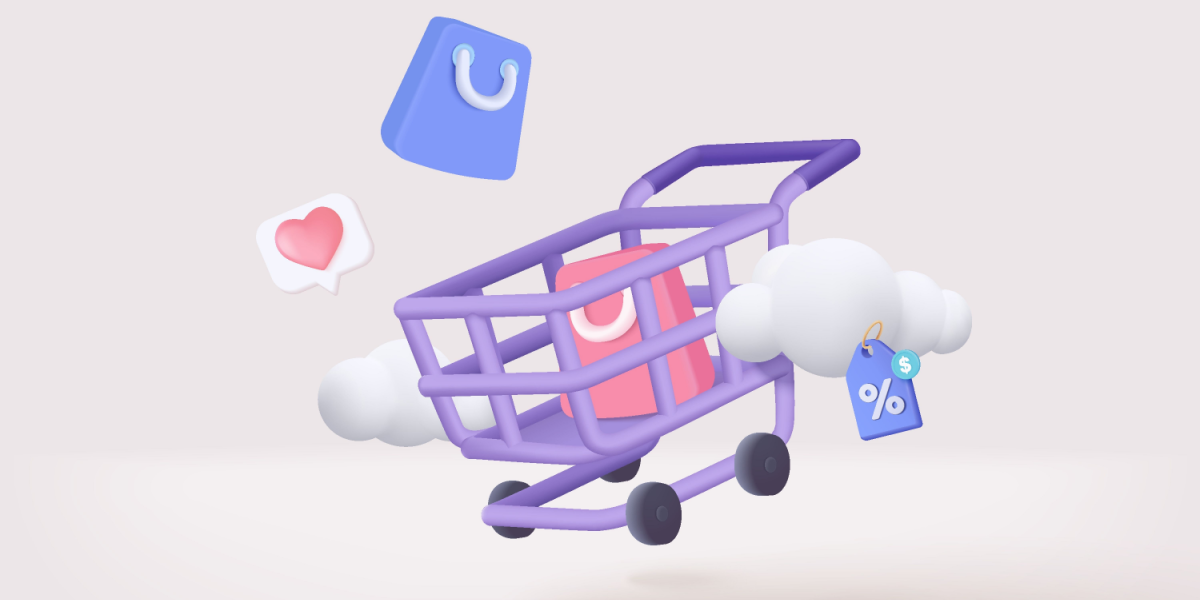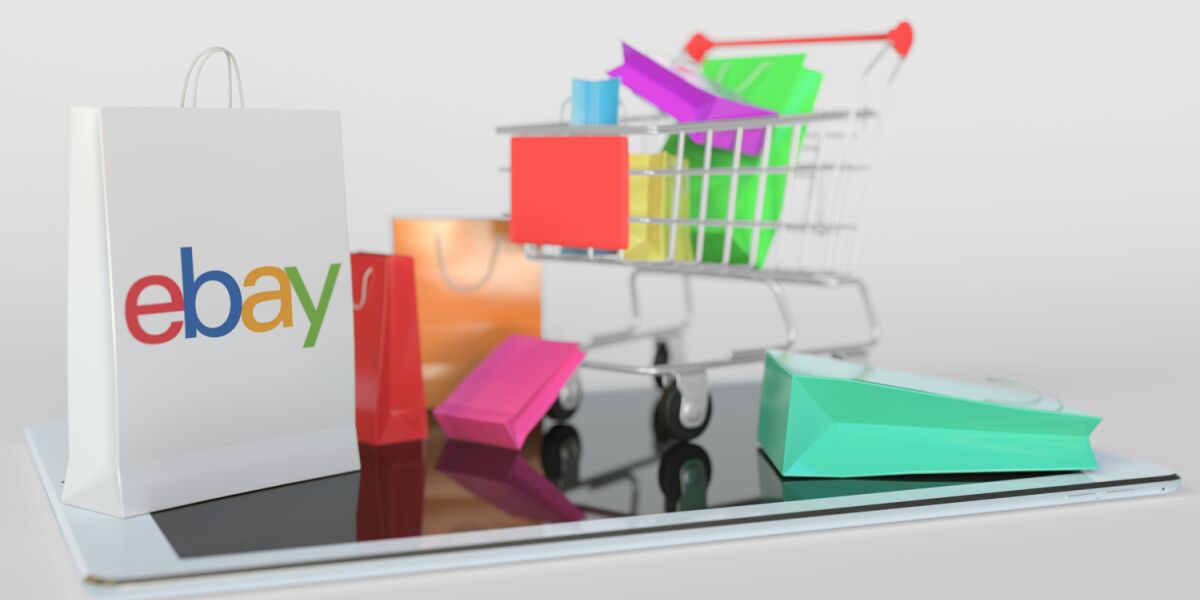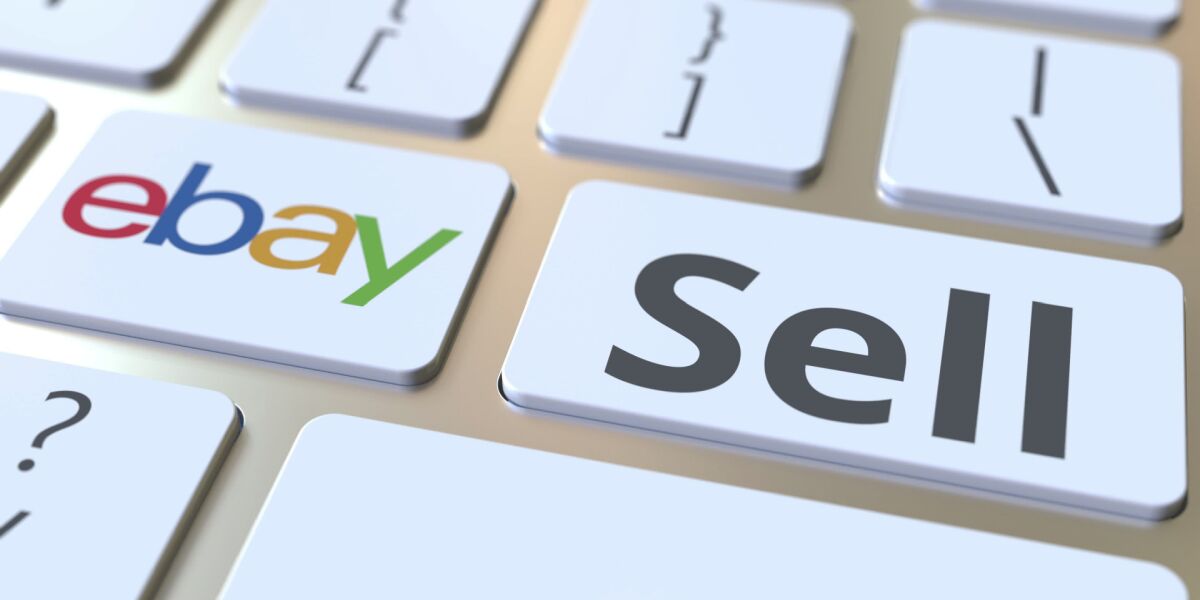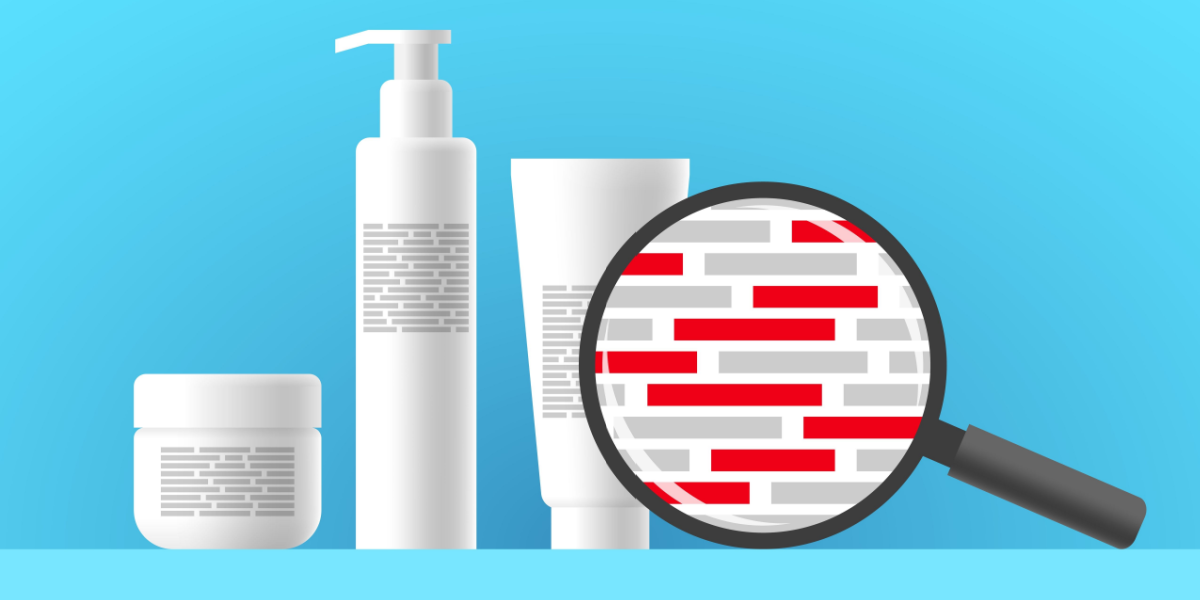It’s never been easier to start an ecommerce business. Thanks to increasing internet accessibility, growing online shopping trust, and more user-friendly tools, entrepreneurs can launch a successful ecommerce business in no time.
That’s not an exaggeration, either. While we recommend you put a little more time and thought into your business before launch day, it’s possible to go from conception to take off in less than a week.
Your ecommerce business could be a full-time job, or it might be a lucrative side hustle. You may list all your items on an online marketplace like Amazon or Etsy, or you could host products on your own ecommerce site using Shopify or Squarespace.
There’s no single-best way to form an ecommerce business.
However, starting from scratch with no direction can be intimidating. Jump off on the wrong foot, and you might have to recorrect down the road, and that can waste valuable time and money.
Let’s help you avoid that from the get-go.
Below, we’ll show you how to start an ecommerce business the right way. Our 6-step process will help you do everything from finding your target market to identifying the right products to launching your online store.
But before we show you how to start an ecommerce business, let’s dig into the why.
Table of Contents
1. Choose Your Target Market First
4. Brand Your Ecommerce Business
6. Market Your Ecommerce Business
Why Start an Ecommerce Business?
Does it feel like everyone from your coworker to your grandma to your childhood pen pal is starting an ecommerce business? There’s a good reason for the surge.
Here are a few (of many) reasons to start an ecommerce business:
- Massive Market: There are an estimated 2.64 billion online shoppers—that’s over 25% of the world population.
- Booming Online Sales: By 2040, experts estimate 95% of all purchases will be made through ecommerce.
- Low(er) Startup Costs: You can start an ecommerce business without spending thousands of dollars. You don’t have to worry about real estate, utilities, or even payroll. Here’s how much it costs to start an ecommerce business.
- Easy Setup: Buy a domain, purchase hosting, find your product, build a brand, and voila—your ecommerce business is ready to go. OK, it’s a little more involved than that, but an ecommerce business is one of the simplest types to set up.
- Flexible Operations: You can operate your ecommerce business from anywhere in the world. Want to take a month-long vacation? Your ecommerce business isn’t going anywhere. Need to relocate across the country? Your ecommerce business likely won’t even notice.
- Limitless Scale: Sell a single product or hundreds of different ones. Make thousands or millions in sales every year. Manage it alone or hire a team. Your ecommerce business can be any size to fit your bandwidth and goals.
- Fun and Freedom: Managing your own business is exciting and rewarding. Yes, it’s a lot of hard work—but the prize is worth the effort.
6-Step Process: How to Start an Ecommerce Business
Hopefully, those statistics and benefits got you hyped up for starting an ecommerce business. Now, let’s talk about how to make it happen.
1. Choose Your Target Market First
Your target market is the specific group of consumers who might be interested in your products.
Some people start with a product idea and then define their target market—however, this strategy has a few potential pitfalls. First, you may find valuable products to sell to an audience that doesn’t interest you. Or worse—you may come up with a brilliant product that nobody wants to buy.
Take Google Glass, for example. Google created the wearable technology without a customer’s need in mind. After 2 years (and hardly any sales), Google accepted defeat and discontinued the product. Google built the product first and tried (and failed) to find a target market.
Lack of market need is the second biggest startup killer. Don’t fall into this trap.
Find the target market, identify the need, and then find the product that solves it.
How to Find Your Target Market
Start with what you know. If you’re a software as a service (SaaS) expert with a side passion for backcountry skiing, selling furniture might not be your forte. And that’s OK.
Instead, look into niches you’re familiar with and like. You’ll be in the know and better ready to find problems that need solving.
For example, if you’re an avid knitter, you likely already have a network of like-minded friends in the community.
What do they complain about? Do specific stitching patterns frustrate them? Do they wish for better knitting needles?
What frustrates you? Is there a problem you struggle with? Would you (and others) be willing to pay for a solution?
Once you find your niche, niche down again. Want to sell bikes to the cycling community? Will that be road biking or mountain biking? Are you going to sell to men or women? Will they be young or old? Are they new or experienced?
Niching down helps you define your target market further and better identify problems they need to be solved.
2. Find the Right Product
After discovering your target market and identifying its problems, it’s time to find the right products. With millions (literally millions) of products to sell online, narrowing down your options can be the most challenging part of starting an ecommerce business.
Let’s look at a few strategies for finding a profitable product that fits your audience:
A. Review Top-Selling Items on Amazon
Visit Amazon’s best sellers page to learn about the most popular products (based on sales). These lists are updated hourly, and you can choose any department to find category-specific items.
Want to sell to new mothers? Check out the Baby department. Looking for in-demand Xbox accessories? Browse in the Video Games section.
Best-selling items tend to have tons of reviews and 4-star or higher ratings. While you might not find the specific product you want to sell on these lists, you can find plenty of inspiration.
For example, you could visit the Electronics for Kids section in the Toys & Games department to learn what’s resonating with children (or their buying parents) these days. Is it walkie-talkies and cameras or karaoke microphones and monster trucks?
As of now, it’s actually the original Tamagotchi from the 90’s—go figure.
B. Find Demand With Keyword Research
Use keyword research tools like Google Keyword Planner, Google Trends, AnswerThePublic, or Ubersuggest (all free) to learn what consumers are searching for.
Ideally, you want to find keywords with high search volume and low product competition. That’s easier said than done, but it’s worth the investment of your time.
Once you find an in-demand product, search for it on Google and Amazon. If you find tons of other sellers, that means you’re going to be going head-to-head with pricing and branding to win customers. If you don’t find many other sellers, there’s a good chance you’ll have more control over the price.
C. Avoid Over-Competitive Categories
Don’t try to take on the big brands. They have the budget, market penetration, and manufacturing scale to beat you every time.
If a product is dominated by names like Nike, Amazon, or Coca-Cola, move on to a different item. Soccer shoes? Adidas and Nike own it. Smart speakers? Alexa and Google have it locked down.
Waterproof headphones for saltwater swimming? Now, that’s a different story. Caffeinated gum for ultra-endurance athletes? Yours for the taking.
D. Use AI Tools for Product Idea Generation
Artificial intelligence holds immense potential as a tool for discovering innovative product ideas. However, its effectiveness is closely tied to the quality and specificity of the input it receives. When you provide an AI program with generic instructions, the resulting ideas tend to be equally broad and unspecific.
The aim is to progressively refine your interactions with the AI, effectively training it to evolve into a reliable business coach. This process of iterative learning and adaptation can transform AI from a simple tool into a trusted advisor for your entrepreneurial endeavors.
Here are a handful of our favorite AI and web tools for coming up with ecommerce product ideas:
- Bing: Bing, Microsoft’s search engine, offers comprehensive web search capabilities. It’s useful for researching market trends, competitor products, and consumer interests, thereby assisting in identifying potential gaps in the market for new products.
- ChatGPT: ChatGPT is an AI-driven chatbot that can brainstorm ideas, suggest innovations, and provide insights based on the latest trends. By engaging in interactive discussions, entrepreneurs can refine their product ideas and gain diverse perspectives.
- Exploding Topics: Exploding Topics analyzes the web to identify rapidly growing trends before they become mainstream. This tool is invaluable for spotting emerging product opportunities and understanding evolving consumer interests in real time.
- Trend Rocket: Trend Rocket utilizes AI to track and predict market trends. It helps entrepreneurs stay ahead by identifying potential product niches and consumer demands that are gaining traction, enabling them to create products that meet these emerging needs.
- Import Yeti (non-AI): Import Yeti is a tool that allows users to explore and analyze international trade data. It can be used to identify popular products in various global markets, understand supply chain dynamics, and find potential product opportunities based on import-export trends.
- Trend Hunter AI: Trend Hunter AI leverages artificial intelligence to scan global data and identify cutting-edge trends. It’s a powerful tool for entrepreneurs looking to innovate, offering insights into what’s next in various industries and helping to generate forward-thinking product ideas.
E. Choose Products You Can Cross-Sell Easily
Don’t lock your brand into a confined category. Before you finalize your product decision, think of other complementary products you can sell down the road.
Want to sell bullet-proof cell phone cases? That pairs well with selling screen protectors and power banks. Thinking of selling selfie sticks? Those could cross-sell easily with tripod stands and phone mounts.
Characteristics of a Good Ecommerce Product
Here’s what many good ecommerce products have in common. While there are definitely exceptions to these factors, your product is more likely to succeed if it checks most of these boxes:
- High Demand, Low Supply: While you want to find high-demand products, you don’t want to compete with hundreds of thousands of other brands. Find the sweet spot where there’s high demand but low supply.
- Recurring Purchase Potential: It’s much easier to resell to a former customer than to convince a brand-new one. Find products that customers will want to buy again soon. For example, customers need to replace batteries and candles frequently, but they likely won’t need to repurchase your 10-year warranty lightbulbs this decade.
- Small Dimensions, Light Weight: As an ecommerce business, you have to ship all of your products. Big and heavy items will cost more to store and deliver, driving your costs up and your profits down. When possible, prioritize small, light products.
- 4-Star or Higher Reviews: Find products that people love and rate highly. Mediocre products might sell well for a time, but they’re in big trouble when (not if) a competitor swoops in with a better item. Focus on quality and happy customers from the get-go.
- Evergreen: Hype can come and go quickly, so don’t jump on a product that might be hot today and cold tomorrow (especially when just starting). Once you’ve mastered launching an ecommerce business, you can more quickly and confidently capitalize on viral demand—but keep things simple and focus on evergreen products at the beginning. For example, Baby Yoda dolls might be top-selling this month and gone next year, but baby wipes and dog food will always be in demand.
3. Source Your Product
Now that you know what you want to sell, it’s time to find the right sourcing strategy. Product sourcing outlines how you plan to get the items you want to sell.
Will you make them with a manufacturer or purchase them from wholesalers? Will you store and ship the products yourself or deliver them through a dropshipping provider?
Let’s walk through a few of your options:
Wholesale
Wholesale product sourcing is probably the most straightforward process. Work with a wholesale company to buy items in bulk at a discount and then sell them for a profit through your ecommerce store. The more you buy, the lower the per-unit cost will be.
Some wholesalers will even allow you to white-label the products. This means you can sell the items under your own brand.
In the early days, you could have wholesalers send products straight to your home, where you can package and ship them to your customers. However, as you scale, you’ll have to change your fulfillment strategy to something more sustainable.
If you’re selling through a platform like Amazon, you can take advantage of Fulfillment by Amazon (FBA). FBA stores, packs, and ships all your items. They even handle returns, exchanges, and customer support. The only thing you have to do is keep Amazon supplied with your product.
Manufacturing
Hire a manufacturing company to make your custom product. If you’ve identified a brand-new product—or want to make an existing product better or more cost-effective—you can work with a local or overseas manufacturer to bring your product vision to life.
This process is more involved, costly, and risky than wholesale, but it allows you to offer a completely new product to your target market. If you don’t have a unique product, you’ll have to find different ways to differentiate your offering (more on that later).
Dropshipping
Dropshipping is similar to services like FBA, but there’s one primary difference: you don’t own the inventory.
With FBA, you purchase inventory and send it to Amazon—they ship it when you make a sale. With dropshipping, your supplier handles warehousing and fulfillment, but you only pay for the product once the customer has paid you.
This might seem like a smarter option, but it has financial implications. While you won’t have to worry about startup costs or the cost to store your products, you’ll face a higher wholesale price on each product—that means lower profit margins on every sale.
4. Brand Your Ecommerce Business
Every successful ecommerce business needs a professional brand. Without a brand, your product is just floating in a sea of competition without any way to differentiate itself.
Think about your consumers. Why would they choose to buy from you instead of someone else? Is it price? What happens if a competitor comes in and undercuts you? Why should your customers stick with you?
Consider Coca-Cola. They’ve built a brand and products that consumers absolutely love. It doesn’t matter if Coke costs twice as much as Pepsi—Coke lovers will still buy it.
Here are a few other ways branding can build your ecommerce business:
- Attract New Customers: We say, “Don’t judge a book by its cover,” but we all do it anyway. The same goes for the products we buy. When you’re shopping for a product, the brand name, logo, and colors all play a part in your decision-making process—whether you know it or not.
- Maintain Customer Loyalty: Customers come to know, love, and trust brands. Brand loyalty makes it easier for customers to shop. Instead of sifting through thousands of items, they often start at the stores they love with the brands they know.
- Boost the Value of Your Business: Back to Coke real quick. If someone were to come out with an identical-tasting Coke product for half the price, it probably wouldn’t knock Coke off its throne. That’s the value behind a brand.
- Improve Recruitment: It’s easier to hire employees when they recognize and trust your brand.
Build Awareness: When you think of TOMS, what’s the first thing that comes to mind? Likely, simple shoes (at a high price) that are donated to people in need when you make a purchase. TOMS brand became more about helping people rather than shoes—and that’s why consumers forked out money to put them on their feet.
Here are the elements of your brand you need to consider:
- Name
- Logo
- Voice
- Purpose
Let’s go deeper into each of these:
Name
Choose the right business name from the start. Sure, you can change it later, as Amazon did with its original name Cadabra or Google did with BackRub (yes, that was the actual name)—but it’s best to nail it from day one.
Would Apple have been this successful if they had started as “Plum” or “Pomegranate”? We’ll never know. However, we do know that a name is a big part of a brand’s identity.
There are no set-in-stone rules for a good brand name, but we’ve found most great names have a few things in common:
- Memorable: Keep it short and sweet so customers can remember it. Long, hard-to-pronounce names get forgotten.
- Distinct: Hundreds of “Main Street Pizza” restaurants exist. Make yours different, like “A Slice of Heaven” or “Dough Mama’s Did.”
- Interesting: Don’t give it all away—pique a little intrigue. Instead of “Sustainable Water Bottles,” you could name your business “EcoH20.”
- Makes Sense: It’d be pretty strange if Dairy Queen only sold lactose-free ice cream.
- Flexible: Burger King has pigeon-holed itself as the monarch of hamburgers, but it’s difficult for the business to gain traction selling salads, fries, or chicken sandwiches.
Logo
A logo speaks a thousand words. Avoid the cheap-and-easy do-it-yourself route and hire a professional. You can find plenty of great logo artists on Fiverr for less than $100—and they’ll even deliver your logo in a variety of styles and file formats.
We have a few tips when it comes to choosing your logo (and your overall brand) colors:
- Don’t Try to Please Everyone: Your logo won’t resonate with everyone, and it shouldn’t. The only people you need to love your logo are your target market.
- Remember Color Psychology: Colors have meaning. White is associated with peace and cleanliness, while silver represents wealth and elegance. Red is associated with passion and energy, whereas blue represents calm and control.
- Maintain Brand Consistency: The colors you use in your logo should be used directly (and complementary) across your website, social media profiles, and marketing material. Stay consistent. Publish your color code hex to help creators stay on-brand.
Voice
It’s not what you say; it’s how you say it. Your voice plays a big part in your brand’s identity. It doesn’t matter how elegant your logo is or great your products are if your brand comes off tone-deaf or rude.
Develop a voice and tone that’s unique to your brand and resonates with your audience. Take Wendy’s, for example. Check out their Twitter account to get a feel for their voice.
It’s sarcastic, snarky, clever, and downright savage at times—yet they’re consistent, and followers absolutely love them. Wendy’s created (and won) a social media rivalry with McDonald’s that consumers didn’t even know or care existed.
Decide what you want your voice to be and why—then stick to it. Be consistent with your voice across all your channels. Wendy’s can’t be witty on Twitter and bashful on Facebook. A brand that’s two-faced has no face.
Purpose
Apple stands for innovation and trust, while IKEA seeks to create budget-friendly furniture that looks good. Tesla stands for sustainable energy, while LinkedIn stands for professional networking.
What does your brand stand for? What is your purpose?
Elizabeth Hague, cofounder of Wildcat Echo, recommends answering one simple question: “What’s the special thing only YOU can do that your customers will miss out on if you never existed?”
Answer that question, and you have your brand’s purpose. Without a purpose, you’re just an ecommerce business with a product out to make a buck—and that purpose won’t drive customer loyalty or repeat purchases.
5. Launch Your Online Store
Finding a product and branding your ecommerce business were the fun steps. Now, it’s time to get into the more technical details.
Your first major decision is to choose whether you’ll sell on your own ecommerce website or whether you’ll rely on online marketplaces.
Let’s look at what those options look like:
Selling on Your Own Ecommerce Website
A website gives you complete control over the customer experience. You get to decide the URL, layout, and available products. You also get to avoid placing your products next to direct competitors, as you’re forced to do on platforms like Amazon or Etsy.
You have plenty of options when it comes to hosting your ecommerce website. Here are a few of the most popular ecommerce platforms:
- Shopify
- Squarespace
- BigCommerce
- Magento Commerce
- Wix
- WooCommerce
- Shift4Shop
These platforms are designed to safely connect buyers and sellers. They have payment processing built-in, as well as user-friendly templates and designs. For the most part, it’s a drag-and-drop website-building process.
The biggest downside to selling on your own ecommerce website is that you have to generate all the traffic. 40% of consumers worldwide use search engines to find products, 38% use Amazon, 35% use other online marketplaces, and 21% use the website of the brand they want.
No customer is going to randomly type in your URL and start shopping on your site—you have to run marketing campaigns to drive traffic (more on that in step 6).
Selling Your Products on an Online Marketplace
Another option for selling your products is on an online marketplace. Online marketplaces already have millions of shoppers, meaning you don’t have to go and find your audience.
Popular online marketplaces include:
- Amazon
- eBay
- Etsy
- Walmart
- Alibaba
Competition on online marketplaces can be intense. You may be compelled to drop your prices to compete for customers, especially when your products are featured right next to similar, cheaper items.
6. Market Your Ecommerce Business
“If you build it, they will come.” That couldn’t be further from the truth when it comes to digital products. There are plenty of excellent blogs and products on the internet that never get any love, mainly because they fail on the marketing aspect of their business.
But that’s not where you’re going to flounder. While there are hundreds of marketing strategies you could execute, here are the 5 most cost-effective channels:
- Social Media: Get started with organic social media marketing, then move into pay-per-click (PPC) ads. Facebook advertising can be a fantastic marketing tool for your ecommerce business when used correctly. Read our quick intro to Facebook Advertising for Social Media Beginners to get started.
- Email Marketing: Email marketing has one of the highest returns on investment (ROI) of any marketing channel. Build your email list, start an email newsletter, send promotional campaigns, and monitor engagement. Need help launching your program? Check out What Emails to Send at Each Stage of the Sales Funnel to Increase Conversions.
- Content Marketing: Blogging, podcasting, YouTube publishing—content marketing is the act of producing content to attract viewers, gain leads, and ultimately convert eyeballs to income. Your audience will come for the content, and your goal is to get them to stay for the products.
- Search Engine Optimization (SEO): Whether you’re driving traffic to your website, YouTube channel, or Amazon listing, SEO needs to be a top priority. Research the keywords you want to rank for and ensure you strategically include those words on your pages to start raking in organic traffic. SEO is a long-term ecommerce marketing strategy, but it’s one worth investing in. Learn the basics of SEO with our Ultimate Guide for SEO Beginners.
Master 1-2 of these ecommerce marketing strategies, and you’ll start seeing consistent traffic—and more traffic means more sales.
Want to learn more about marketing your ecommerce business? Read through our guide: 11+ Ecommerce Marketing Strategies to Boost Your Online Sales.
Best Practices for Starting an Ecommerce Business
Regardless of what business you’re starting or what you’re selling, there are a few things you should do to set yourself up for success. Follow these best practices to start your business on the right foot:
Research the Competition
Find out what you’re up against. Are your competitors big and notorious, or are you up against other blossoming businesses? Does a handful of other companies sell your products? Or is it a hundred or a thousand? What are your competitors’ unique value propositions (UVP)?
Differentiate Your Offering
Decide how your ecommerce business (and products) are going to be different from the others. Will you have higher quality products or lower prices? Will you provide undeniably amazing customer support, or will you focus on how your brand supports a good cause?
Build a Brand
Don’t just sell products—build a brand. Products come and go, but your brand can last a lifetime (or even more). Get people to recognize and trust your name and logo. Trust is one of the first steps to earning a sale. It doesn’t have to be everybody—you just need your target market to identify you.
Choose the Right Platform
Some products and brands do better on online marketplaces, while others perform better on standalone ecommerce websites. And some do well on both. If you’re starting from scratch without an audience, you might want to start with an online marketplace as you build credibility and start seeing traffic from your promotional tactics.
Provide Top-Notch Customer Service
Anyone can whip out a product and throw it up on an online marketplace—but the best (and most successful) ecommerce businesses go above and beyond when it comes to customer support. Remember, you don’t need everyone to love your brand. You just need a select target market. Focus on making your audience’s experience with your product and team better than they’ll find anywhere else.
Optimize for Conversions
Analyze your metrics and run A/B tests to drive up your conversion rate. You want more people clicking on your ads, and when people reach your website or product page, you want more people making a purchase. If you optimize your conversions right, you can significantly boost your income without having to spend extravagantly on gaining traffic with ecommerce marketing.
Start Small
Don’t try to do it all. Take baby steps with your ecommerce business. Launch with one product instead of 5. Start on a single platform rather than trying to be active on all of them. Focus on a handful of marketing channels rather than doing absolutely everything under the endless digital sun.
Keep Learning About Ecommerce
Bookmark this article and keep learning. Start reading more of our proven ecommerce tips and tools at the links below:
- Ecommerce Business Ideas That Yield Powerful Results
- How to Start a Dropshipping Business
- How to Come Up with New Product Ideas (That Don’t Suck)
- Find the Most Trending Products This Year
- Ecommerce Strategies for Beginners
- 10 Ecommerce Tips to Grow Your Brand
- Product Validation Guide
- New Product Development Process
- How to Start an Online Store
- How to Find a Manufacturer That Won’t Burn You
Launch Your Ecommerce Business
You now know how to start an ecommerce business. Congratulations! Now, it’s time to make it happen.
Join foundr+ to learn how you can start a profitable online store in 12 weeks or less. We’ll walk you step-by-step through every phase of the process, helping you find products that’ll sell and tactics for generating sales immediately.
Ready to make your ecommerce business a reality? Sign up and get started.
